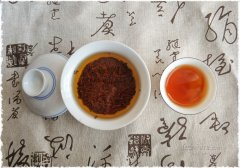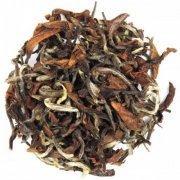A brief introduction to the names of the three major beverage tea varieties in the world the characteristics of Yunnan Jinsi Yunnan black tea
We often discuss four factors for each kind of natural tea to develop its unique flavor. Variety, harvest date, origin and technology all play a role in shaping the characteristics of finished tea. However, the weight of these factors in defining quality and taste may vary from category to category or even from tea to tea.
In order to understand the impact more clearly, tasting some teas that rely heavily on a single factor can help. Today, we will use four kinds of tea to show the importance of the harvest date. If they were harvested at other times, they would taste different.
1. Dragon Well
What makes it so unique? Longjing tea is purchased from traditional areas of Zhejiang every year. What's so special about Longjing tea?
The best Longjing is made up of the most tender leaf buds.
The answer, of course, is the harvest date. The tea is made up of leaves picked for the first time each year: tiny, tender leaf buds, carefully picked and gently roasted to preserve the most subtle natural flavor. Because these are the first leaves to appear after winter dormancy, they grow slowly and are powered by carbohydrates stored in the roots, rather than photosynthesis through leaves. This gives them a natural sweetness and buttery taste that will not be replicated until next spring.
Of course, the season for picking these small leaves is limited, which limits the quantity available each year, and their highly precious taste brings a corresponding price. For connoisseurs, however, the quality of the early spring harvest is unparalleled.

two。 Silver needle
The minimum processing of white tea also highlights the natural quality of the early harvest. Although other factors such as variety and origin are also the main factors affecting the overall quality of white tea, the name "silver needle" is usually applicable to the harvest of all early spring white tea.
This is because the harvest time forms the physical characteristics of the tea, hence its name: only the youngest buds of the tea tree close into small "needles" and are covered with white fluff, making the leaves silver. Through the traditional "fade" unique processing steps, this exquisite coating even gives the entire category a name.
Unlike green tea, the production of white tea has been limited to a small area in history, although the scope has been expanded, but the diversification of production methods is very slow. In the traditional handmade white tea, there are mainly three styles. Each kind has a harvest date, the silver needle represents the earliest harvest, followed by Bai Mu Dan, followed by Shoumei in spring and summer. Although the later two kinds of tea are relatively easy to obtain, Silver Needle Tea is still the most famous, even giving rise to a myth that all white tea is made up of buds!
3. Jin Xuan, winter bud
Although the rest of the tea on this list is picked in early spring, this unusual tea is picked in the depths of winter. In a typical cold dormant season, subtropical Taiwan occasionally experiences brief, relatively warm weather, which may "trick" tea trees into sending out new leaf buds.
Because these leaves go through a period of slow and difficult growth as early spring buds, they produce similar natural sweetness. However, without spring rain, carbohydrates are diluted less, making the flavor stronger. Combined with the unique creamy taste of all alpine Taiwan oolong tea exposed to the limited sunlight, this kind of tea really stands out.
4. Golden silk black tea
In the world of micro-oxidized tea, the harvest date is usually more important for quality, but some black teas are also affected by their early harvest dates. Like Silver Needle Tea, this classic Chinese black tea gets its name from the unique appearance of spring leaves. Unlike the dark black of the oxidized mature leaves, these buds turn into a unique golden color.
In addition to the unique color, the early harvest date of the gold thread reserve also gives it a typical malt texture, thanks again to the carbohydrates popular in leaf sprouts. Unlike late-maturing black tea, late-ripening black tea is sometimes favored for its bold and crisp taste. This kind of tea has a deep and rich taste without a trace of astringency.
With the popularity of black tea around the world, this category has produced numerous styles and flavors, but this carefully picked tea has a natural molasses-like sweetness and smooth aftertaste, which can be recognized at a glance. Even if it is called "Yunnan gold" or "golden needle", it is defined according to the choice of tender leaves.
The production of these four kinds of tea is very special, largely because of their harvest date. Try to compare with another kind of tea of the same category and fully experience the differences for weeks or months! Taking the time to pay attention to the identity of every aspect of tea will help taste learn to identify key features of natural flavor.
Important Notice :
前街咖啡 FrontStreet Coffee has moved to new addredd:
FrontStreet Coffee Address: 315,Donghua East Road,GuangZhou
Tel:020 38364473
- Prev

What is the origin of the top black tea? how do Keemun Black Tea make the three largest black teas recognized in the world?
Among the four main aspects of tea identity, the provenance is probably the most complex. From climate and weather patterns to the chemical composition of the soil, the country of origin (or terroir) contains a variety of elements that help define the taste of each tea. In addition to the variety, harvest date and craftsmanship, the planting area of tea can tell us a lot about making tea. But sometimes it is difficult to distinguish the influence of the source.
- Next

Where does the Oriental Beauty's name come from? what is the good effect of drinking Oriental Beauty Tea?
Oriental Beauty, Baihao Oolong Tea and Pengfeng Tea are a kind of unique famous tea. Traditionally, it grew up in Hsinchu County in northern Taiwan. With undulating mountains and mild climate, it is an ideal place to grow tea. Residents transferred from Chinese mainland in the Ming Dynasty probably began to plant tea trees here at that time, and these earliest tea trees may include varieties that later became oriental beauties.
Related
- What effect does Italian American coffee with filter paper have? Will coffee taste better if it is put on filter paper at the bottom of the powder bowl?
- What is the color difference in coffee beans? What are the characteristics of honey processed coffee beans? Why are the anaerobically treated coffee beans uneven in color?
- How does novice Xiaobai quickly get started and make coffee? Newbies learn to make coffee by hand and share the specific steps and process process!
- Costa tea has a shelf life of 100 years?! Expert: Unable to verify
- It's a huge uproar! American milk addition was rejected by Manner employees?!
- Mocha pot coffee bean recommendations| How fine and how much powder should be used for grinding? What parameter ratios do I need to use to make milk with Mocha pot coffee?
- What are the characteristics of the world's top ten coffee beans treated with Costa Rica honey? How to make black honey kadura from Tarazhu Pilon Processing Plant taste good?
- How to make deep-roasted coffee? What grinding water temperature does authentic Jamaica Blue Mountain No. 1 coffee use to brew it well?
- Selected high-grade rose summer coffee flavor tasting guide Why Panama rose summer has the aroma of flowers and fruits
- What equipment does a novice Xiaobai need to buy to learn to make coffee? Filter cup electronic scale bean grinder manual flushing pot purchase guide

